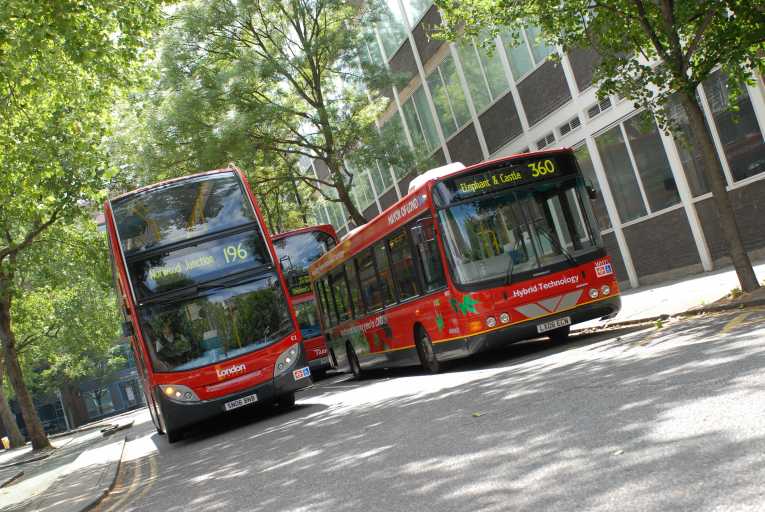Seeing London as a tourist needn't cost the Earth, in more ways than one. After years of being shunned by American and European travellers in favour of more affordable cities such as Paris and Rome, the British capital is seeing a marked increase in overseas visitors as the ongoing weakness of the pound on the international currency markets makes it a more attractive proposition. At the same time, ongoing efforts to make London a world leader in sustainability are helping to make the city an increasingly attractive destination for the eco-conscious, as well as the financially-savvy traveller.
It's no surprise, therefore, that Britain's first permanent hydrogen-powered bus service has now been launched, not on a busy commuter route, but on a tourist trail taking in the likes of Tower Bridge, the Tower of London and Covent Garden. Following the route of the River Thames into the heart of the West End, the RV1 bus is carry batteries that can store electricity generated by a hydrogen fuel cell, with this complemented by the power fed back into the engine from braking. Significantly, the buses can operate for 18 hours - more than enough to carry thousands of camera-toting tourists past major landmarks - before needing refuelling, only emitting the water produced from the combination of oxygen and hydrogen within the engine into the atmosphere.
Though critics and pessimists could question the amount of energy needed to charge the fuel cells in the first place, the main point of this latest initiative is not so much to reduce the size of London's carbon footprint as a whole, but to improve the quality of air in the city centre.
Celebrating the launch of the first of what will be an eight-strong fleet of hydrogen-fuelled vehicles running this tourist route, London Mayor Boris Johnson said: ''These buses are a marvel of hydrogen technology, emitting only water rather than belching out harmful pollutants. They will run through the most polluted part of the city, through two air pollution hotspots, helping to improve London's air quality.''
The launch of the eco-friendly bus service is just one of several ways in which City Hall is actively working to put London firmly on the green tourism map. Just recently, the £140 million public cycle hire scheme was expanded to enable casual users and tourists, with anyone with a credit card now able to take a bike across the city for just £1. Regardless of whether or not the current Mayor should take credit for the 'Boris Bikes'- his predecessor Ken Livingstone was the one to initially outline plans for a city-wide cycle hire scheme, while the first hydrogen-powered buses were first trialled back in 2003 - what can't be disputed is that they have proven to be a massive hit with residents. Proving the initial skeptics wrong, demand for the bikes has been so strong that near-empty docking stations are a common sight across the capital, while only a handful have been stolen and accidents have been kept to a minimum. Furthermore, the initial signs are that tourists are equally as keen to see the city on two wheels as they are on four.
Meanwhile, plans to make the London air cleaner still by replacing the oldest and dirtiest of the iconic black cabs with electric models have also been unveiled, with Mr Johnson having confirmed that no vehicle more than 15 years old will be granted a license from 2012 and expressed his ambition that all will be eco-friendly by 2020 at the latest.
The plans may certainly be ambitious and their success could well depend on the willingness of both Londoners to become more like their counterparts in continental cities such as Amsterdam and Copenhagen and embrace public transport and bicycles as a genuine alternative to private cars rather than merely an occasional novelty. However, even if they're only partly-successful, already the city is moving on from its past status as Europe's dirty neighbour as clear skies replace the dense, yellowish 'pea soup' fog of yesteryear.










